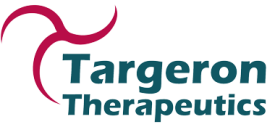Scientific innovation and concept development
The initial antiviral response was assumed to be exclusively mediated by type I IFNs (IFN-α/β). However, in 2003 a novel group of IFNs, type III IFNs (IFN-λs), which activate antiviral protection independently of IFN-α/β (Rutgers-awarded US patents 8,715,637 and 7,820,793) was discovered. Although, type I and type III IFNs have very similar biological activities, they signal through different receptors which have distinct pattern of tissue distribution in vivo, therefore limiting activities of type I and type III IFNs to specific cellular subsets.
Since many viruses infect multiple cell types and mice deficient in both IFN-α/β and IFN-λ signaling are more susceptible to viral infections, than single IFN receptor-deficient animals, we reasoned that a combination of IFN-α/β and IFN-λ should provide the most effective protection against both systemic and mucosal viral infections. Similarly, tumor cells of epithelial origin are more sensitive to IFN-λs, whereas endothelial and immune cells are only responsive to IFN-α/β. Therefore, we have developed novel IFN-β-IFN-λ fusion protein joining both IFN types in a single polypeptide (US patent 11,292,823) allowing simplified production and synergistic activities due to the higher receptor affinity of the fusion polypeptide. To reduce undesirable off-target effects of IFNs, we added phosphatidylserine (PS)-binding Gla domain of Gas6 protein that should preferentially localize IFNs to the sites of infection or tumor growth ((US patent 11,352,404). Moreover, Gas6-IFN-β-IFN-λ also contains 4 EGF-like domains of Gas6 that facilitate enhanced IFN signaling in the presence of PS further augmenting the antiviral and anti-tumor IFN activities of the fusion polypeptide.



